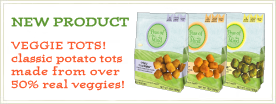Lentils are used throughout India, the Mediterranean regions and the Middle East. They are frequently combined with rice, which has a similar cooking time and creates the same 'complete' protein in the diet as classic combos like rice and beans or a PB & J.
There are many varieties of lentils from all over the world. Here are our three favorites that we always have in the pantry:

- Red/Pink lentils (aka. masoor dal) [pictured right]
- cook time: 10-12 minutes.
- texture when cooked: loose their shape, very soft
- use in: pureed soups and saucy, curry-like Indian dishes
- Example: Dal (lentils) with Coconut Milk over brown jasmine rice
- Brown lentils (khaki colored) [pictured front]
- cook time: 15 minutes.
- texture when cooked: hold their shape but creamy inside.
- use in: soups, stews and salads.
- Example: Vegan 'Sloppy Joe's'
- French Green (dark speckled blue-green) [pictured left]
- cook time: about 20 minutes.
- texture when cooked: maintain their shape and a firmer texture
- use in: salads (warm or cold).
- Example: Lentil Salad with Roasted Bell Peppers and Lime-Cumin Vinaigrette (from Vegetarian Cooking for Everyone by Deborah Madison. This is one of our favorite cookbooks. It contains another fabulous recipe with lentils, pasta and rice. Sounds strange but tastes awesome!)
- For salads, drain lentils when they are cooked through but still firm.
- For soups or purees, cook lentils until they are soft.
- Lentils can be cooked in the microwave, but it takes almost as long as on the stovetop.
- Try them sprouted!
- in soups
- casseroles
- with vegetables
- with grains like pasta or rice
- in a salad, warm or cold
- in a chili-like legume stew, served on a roll like a sloppy joe
- formed into patties for veggie burgers

